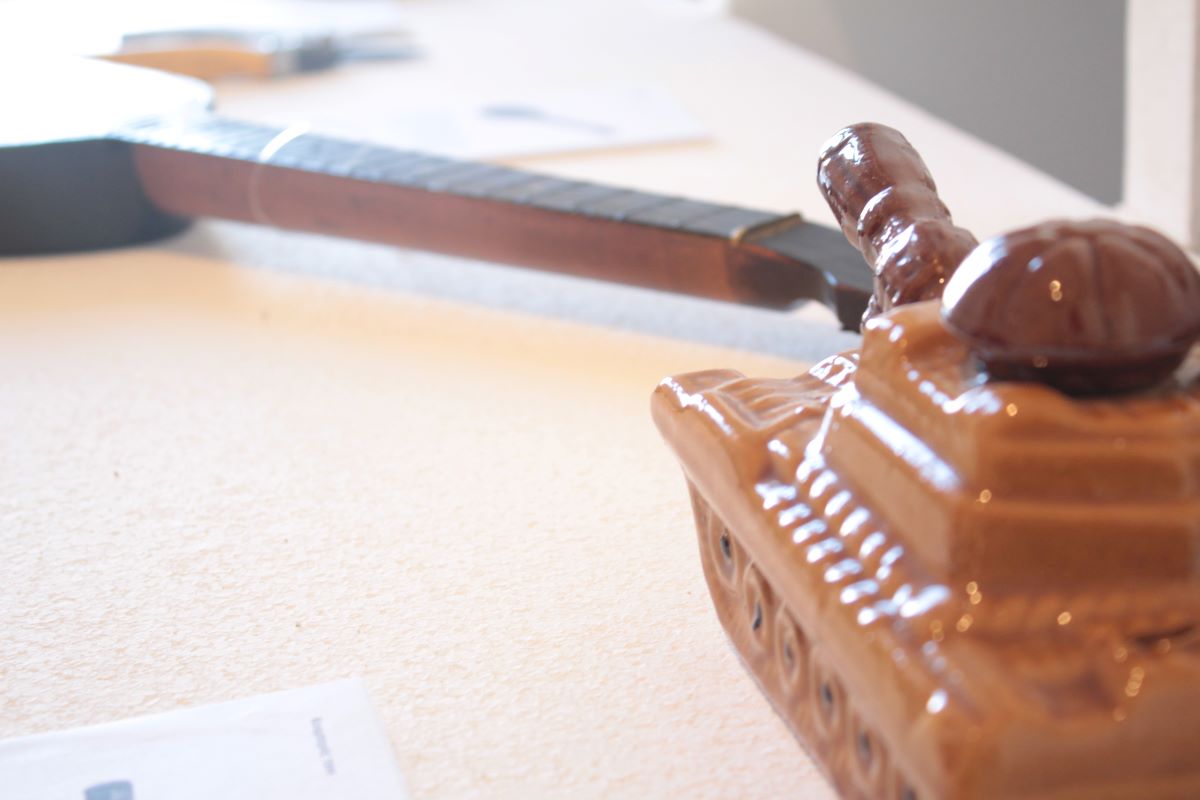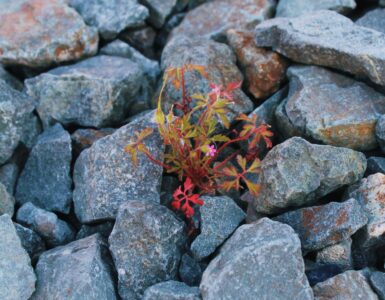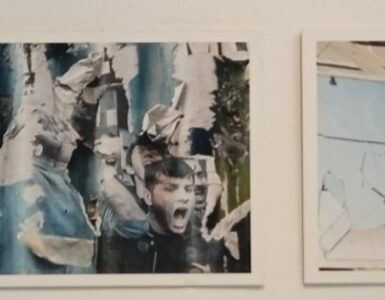An art exhibition is the space where an art object meets an audience. There’s always something attractive which will hold and catch your attention. It was the 24th of October when a group of the ‘Young Journalists’ team visited the exhibition ‘Outcast Europe’. From personal diaries, clothes and jewelry, to a sewing machine and a small television, what was exhibited there had little to do with art. It was rather an exhibition about memories of displacement and movement from the Balkans and beyond since the 1920s.
However, the most interesting and special part of the exhibition was its setting: the 124-year-old Hotel ‘Bageion’ in Omonia square in Athens, designed by Ernst Ziller. Renovated from outside, but abandoned inside, the organizers of the exhibition chose it because it is one of the oldest hotels in Athens, which still stands there resisting time, just like the memories behind the objects of ‘Outcast Europe’.
Every object here has a long story. The journey starts in the 1920’s – when a diverse population from Asia Minor was violently dragged into Greece as refugees while struggling to recover from the same war responsible for its displacement – and continues until today with the war in the Middle East and the influx of asylum seekers into Europe.
After a tour of the gallery, we discussed about the exhibition with Mr. Nikos Papakostas. He is one of the co-founders of ‘Inter Alia’, the organization behind ‘Outcast Europe’.
How did you come up with the idea of this exhibition?
We came up with idea about 20 months ago, when we tried to brainstorm and and think of something to do on the subject of migration and remembrance of European people, about their own history. In addition to remembrance, another issue that we started talking about was democracy, what you need to have before you start participating actively as a citizen. Well, what you need is knowledge of our cultural background, a clear sense of heredity and history, and being able to tell the two apart.
How much time did it take to gather all the objects and organize the exhibition?
Each partner organization of Outcast Europe had a period of about 5 months to collect the items and set up the exhibition in each one of the countries that participated, namely the Czech Republic, Hungary, Serbia, Bulgaria and the Republic of Macedonia. The exhibition took place locally in those countries with specific items. Each one of them focused on a particular period in the country’s history, when people en masse left it or moved there as migrants or refugees. Then, we brought everything together here, in this international and final exhibition. For us, it took 6 to 8 months to collect the items and finalize the exhibition. We traveled to each one of the other countries and asked the public for items that reflect the experience of displacement and migration. Those are exhibited along with objects belonging to present-day refugees, people who have come to Europe in the past few years. In order to collect the items, we made open requests on the radio, newspapers, and social media. Also, we collaborated with dozens of organizations that work with refugees in Greece, as well as with groups and clubs which are connected to the experience of Greeks as refugees in the 1920’s.
In one of the rooms, there’s a rather new but turned off smartphone. Why did you decide to exhibit it here?
Normally, it shows the picture of a young boy. Many people played with it and the battery died very quickly.. What you were supposed to see was Hussein, a young boy from Shiraz in Iran. His grandmother, Miriam, came to Greece last year as a refugee. She told us that she had nothing, because the smuggles took her money, took her belongings, everything that she had. She was left empty handed and had nothing to offer to the exhibition, but she keeps all her memories of home through this picture of her grandson. The phone is not relevant, but the picture and the story are.
Why did you choose this building for the exhibition?
Bageion Hotel has been very generously provided to us. It is a space that adds value to our exhibition. Personally, I see three reasons for that. The first reason is its location, which is very favorable for doing an event like this. That’s because Omonia square has always been a meeting place, not only for Athenians but mainly for non-local people. In the 1950’s and 1960’s there were huge waves of migrants coming from other parts of Greece to Athens, Omonoia being the meeting place. The same stands for migrant populations today. On the other hand, this building is in a struggle, it is in a struggle with time, in a struggle with decay. At the same time, though, it tries to resist time. In terms of semantics it has a very interesting meaning that we would also like to convey through this exhibition. I mean that the exhibition is trying to show the struggle of Europe between its past, its present and its future. The building ties in with this idea very well. The third reason is that it used to be hotel. A hotel is by definition a place of temporary stay. It shows, in a way, that we are all migrants, we come and go. Nothing is stable, nothing is permanent, nothing is eternal. The building chose us as well.
What we have seen in ‘Outcast Europe’ are memories of people and displacement. Don’t judge something you know nothing about, because every object in the exhibition has a story, and every story has a moment that we can all relate to.











Add comment